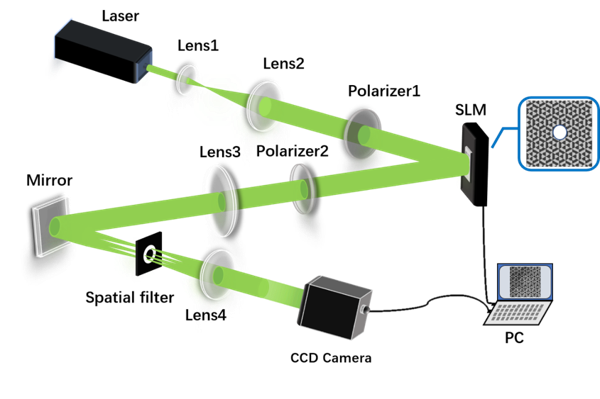The self-healing property of optical fields is a crucial aspect that refers to the ability of light to restore its original state after encountering obstacles during propagation. This phenomenon has significant applications in several technical fields, including optical communication, microscopic imaging, and optical tweezers. The discovery of self-healing properties in Bessel beams in 1996 paved the way for extensive research in this area. Further research has revealed that non-diffracting beams, such as Matthew beams and transverse parabolic beams, also possess self-healing properties. These beams share a common characteristic, namely a conical wave vector, which is indicative of the self-healing properties of non-diffraction photonic lattice light fields. Dr. Vaity from India has experimentally confirmed the self-healing properties of the ring lattice beam. The transverse Poynting vector distribution of the cross-section of this beam reveals that the energy flows from the unblocked part to the blocked part, subsequently rebuilding the structure of the latter. Although the light field in this experiment features a single lattice structure and is not periodic, it sufficiently demonstrates the self-healing properties of the lattice light field.
Discrete non-diffracting beams are often utilized in photonic lattice design and light manipulation research due to their periodic or quasi-periodic transverse light intensity structures. Classic diamond, graphene, and Kagome-type photonic lattices have undergone extensive study concerning spatial optical solitons, boundary states, and flat-band optical localization. In 2020, a novel light-induced moiré photonic lattice was proposed, allowing for optical localization solely through changing the twist angle of two sub-lattices. This approach expands the dimension of optical localization, making moiré photonic lattices a topic of significant interest in this fields, soliton state control, and topology. The moiré photonic lattice wave field is formed by the rotational superposition of two discrete non-diffraction beams with the same period, making it a type of non-diffraction beam. The research group of Shandong Provincial Engineering and Technical Center of Light Manipulation from Shandong Normal University conducted a study on the self-healing properties of moiré photonic lattice wave fields. This work has been published in Chinese Optics Letters , Volume 21, Issue 3, 2023 (S. Tang, et al., Self-healing of holographically generated moiré lattice wave fields).
The researchers utilized multi-plane light interference to design periodic and quasi-periodic moiré photonic lattice wave fields, and introduced defects of varying sizes and shapes into the wave fields. The holographic method was chosen for experimental generation of the designed defect moiré lattice wave field. This method allows for flexible realization of the required optical field structure according to the designed phase, improving the convenience of the experiment and reducing costs. Additionally, the moiré lattice wave field generated through this method can maintain consistency in the light intensity structure over a large size range, making it a commonly used method for fabricating light-induced photonic lattices. Numerical simulations and experimental observations led to the conclusion that after formation of the defect moiré photonic lattice wave field, its self-healing distance is positively correlated with the size of the defect in the non-diffracting range, with the center of the defect being repaired first.
The moiré photonic lattice wave field produced by holographic method still possesses a non-diffracting distance in front of the back focus of the 4f system. It is discovered through experiment that within this non-diffraction range-extending from the lens to the back focal plane of the 4f system-defects in the light field of the moiré photonic lattice increase in size, gradually approaching the pre-designed defect size and shape. To quantitatively investigate the self-healing effect, the researchers introduced a function of similarity degree, which allowed them to obtain the similarity of different positions in the light transmission direction based on numerical simulations. This method confirmed the law of the self-healing distance of the moiré photonic lattice wave field, which was found to be independent of the periodic and quasi-periodic properties of the wave field.

Fig. 1 Experimental setup for studying the self-healing of moiré lattice wavefields by holographic method


